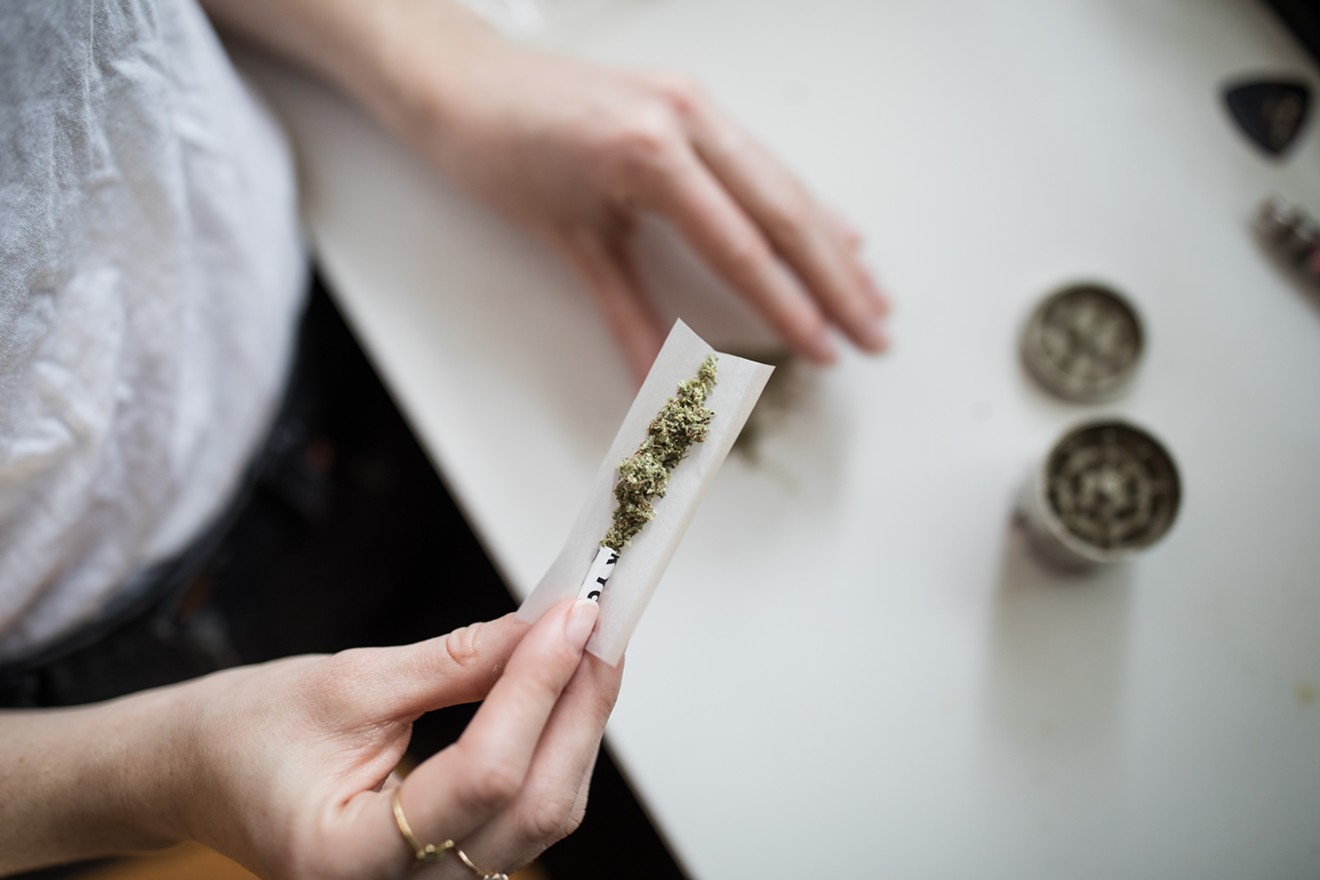High on marijuana doesn’t mean light-headed. Cannabis consumers describe the feeling in myriad ways. Sights become more interesting, if not vaguely twisted. Sounds take on a new dimension. An overall feeling of wellness may arise. Pain fades away. Fact is, the endocannabinoid system, when stimulated, can produce both cerebral and sensory changes.
Why does marijuana make people feel this way? Read on. Knowing the science behind why your senses are altered after a big puff adds a new layer of understanding to pot-smoking.
Naturally, the first part in the process is when vapors travel through the bronchial tubes and into the pulmonary tree in your respiratory system, explained Dr. Sue Sisley, president of the Scottsdale Research Institute.
The haze carries molecules including the well-known tetrahydrocannabinol (THC) and cannabidiol (CBD), but also approximately 130-plus other cannabinoids in lesser quantities. These compounds go through the alveoli, the lungs’ passageway into the bloodstream, Sisley said. Then, the now-cannabinoid-rich blood travels toward the brain, passing through a filter called the blood-brain barrier, and floods the central nervous system. That’s where the benefits start.
The central nervous system is loaded with CB1 receptors, which the cannabinoids bind with. Sisley described these receptors as a satellite system, endlessly sending messages throughout your body. The effect induces feelings of relaxation and a sense of wellness, she said. (Although, it can sometimes produce anxiety and paranoia, depending on the dosage and strain.) The cannabinoids also bind with opioid receptors in the spine, which can dampen pain.
Sisley referred Phoenix New Times to Eugene Monroe of Maryland, a former NFL player for the Jacksonville Jaguars and Baltimore Ravens, for anecdotal evidence of what all this can mean for some consumers.
Monroe said he incorporated marijuana into his training and recovery programs in 2015. After a compound of injuries, surgeries, and firm resistance to painkillers, he was drawn to the healing effects of marijuana and its ability to numb the pain.
“I can’t remember the last time I didn’t use marijuana before I worked out,” Monroe said. “It’s been phenomenal at not completely eliminating the pain and inflammation I have, but certainly taking the edge off enough to where I can power through a workout and not be miserable from my back issues, knee issues — you name it.”
But you don’t need an intense training regime or chronic pain issues to get the benefit of a cannabis-fueled workout. Take a yoga class at your local studio. Or grab a bike, a buddy, and a blunt and ride through the Scottsdale Greenbelt or Arizona Canal system.
Parallel to your (hopefully positive) emotional shift, all of your senses become heightened, said Jordan Tishler, M.D., president of Association of Cannabis Specialists and CEO of InhaleMD. This combination sets you up for blissful interactions with the world around you.
When it comes to visual alterations, this can be attributed to tetrahydrocannabivarin (THC-V), Tishler said. It’s a fellow cannabinoid that offers a subtle psychedelic effect. If you’ve ever watched a movie high, your empathy for the characters skyrockets and the film seems to become three-dimensional. That’s the THC-V bending the way your mind lets you see things, according to Tishler.
And what about sound? Taking a few hits during a concert may elevate appreciation of the melodies, an effect music-loving cannabis consumers know well.
Sound waves hit your eardrum, convert into mechanical energy, and travel through your inner ear, which houses more cannabinoid receptors, Tishler said. The receptors send messages to your nerves that eventually flow through the central nervous system, adding up to auditory stimulation.
If you want all your senses to come out and play, spend a day in nature. Mountains, trees, rivers, and wildlife become exceptionally vibrant because of the aforementioned effects — but also due to the sense of smell. It’s the most primitive sense, Tishler said, and one that connects with the limbic system, which is the emotional center of the brain. So stop and smell the flowers, literally. While high, they’re going to be extra aroma-therapeutic.
The sense of touch is changed by cannabinoids, too, since there are CB receptors on the skin. The feeling of sunlight is like wrapping up in the plushest blanket. (Okay, unless you’re in Phoenix’s legendary scorching heat, in which case, a dark, AC-cooled room with a television may be best.)
On nice days, though, the outdoors and marijuana go together. Amp up the synergy with an outdoor adventure, whether kayaking at the lake or hiking a trail.
Just be sure to pack a tasty lunch for when the munchies kick in, since cannabis also targets the hypothalamus, the appetite center of the brain.
[
{
"name": "Air - MediumRectangle - Inline Content - Mobile Display Size",
"component": "18478561",
"insertPoint": "2",
"requiredCountToDisplay": "2"
},{
"name": "Editor Picks",
"component": "16759093",
"insertPoint": "4",
"requiredCountToDisplay": "1"
},{
"name": "Inline Links",
"component": "17980324",
"insertPoint": "8th",
"startingPoint": 8,
"requiredCountToDisplay": "7",
"maxInsertions": 25
},{
"name": "Air - MediumRectangle - Combo - Inline Content",
"component": "16759092",
"insertPoint": "8th",
"startingPoint": 8,
"requiredCountToDisplay": "7",
"maxInsertions": 25
},{
"name": "Inline Links",
"component": "17980324",
"insertPoint": "8th",
"startingPoint": 12,
"requiredCountToDisplay": "11",
"maxInsertions": 24
},{
"name": "Air - Leaderboard Tower - Combo - Inline Content",
"component": "16759094",
"insertPoint": "8th",
"startingPoint": 12,
"requiredCountToDisplay": "11",
"maxInsertions": 24
}
]












